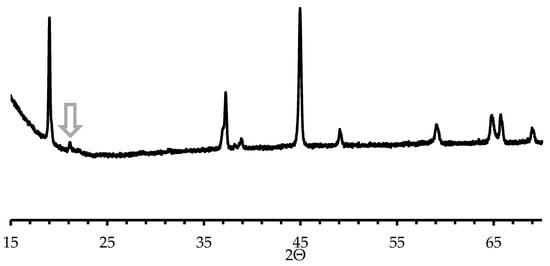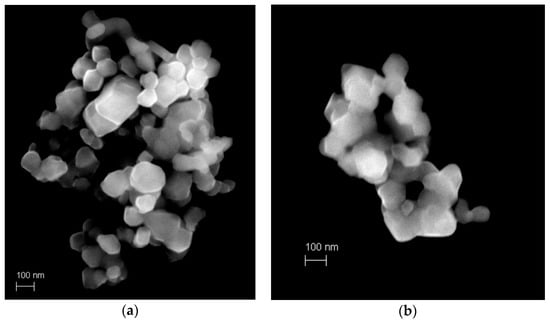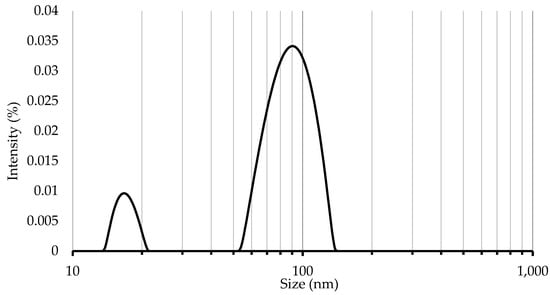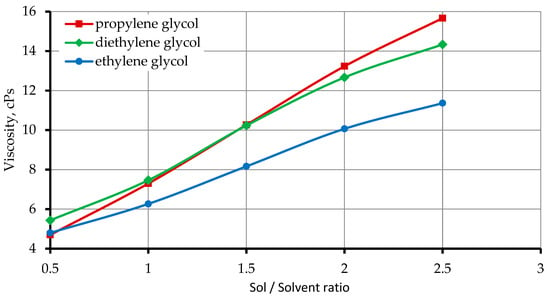Abstract
Due to the demand for wearable and implantable microelectronic devices (MED), there is growing interest in the development of thin-film lithium-ion microbatteries (LiBs) with high-energy density. The high cost of production is an issue restraining thin-film LiBs’ wide application. Inkjet printing is a method of applying materials to the substrate surface: ink droplets formed on piezoelectric nozzles fall on the substrate, whereafter evaporation of the solvent thin layer of film is formed. The proposed technology can simplify the production of LiBs for MED and reduce their cost. The present work reports the results of inkjet printing 3D cathode development for LiBs. The 3D printed cathodes were produced using synthesized Li-rich cathode material (Li1.2+xMn0.54Ni0.13Co0.13O2, 0 < x < 0.05) which has a larger capacity (>250 mAh/g) in comparison with the materials used in modern lithium-ion cells. For LiB electrode printing, the non-aqueous solvent-based inks were used. The prepared cathode material was dispersed in N-methyl-2-pyrrolidone. The effect of various additives such as ethylene glycol, diethylene glycol, propylene glycol on the viscosity and stability of the ink was studied. Inkjet printing was performed with the use of a Dimatix Material Printer 2831. Substrate temperature, number of layers and other parameters were varied to determine the optimal printing conditions.
1. Introduction
Currently, due to the development of wearable and implantable microelectronic devices: biomedical implants, autonomous sensors, smart cards, chips with built-in power sources etc. there is a growing interest in the research and development of solid-state thin-film Li-ion batteries (LiBs). In order to be applied in powering microelectronic devices (MED), the developed LIBs should meet requirements such as reduced dimensions, high energy density, cycle life, costs of production and so on. For better satisfaction of these requirements, the new technologies and approaches to LIBs production should be developed. For the mass production, the possibility of scaling and simplifying of LiBs manufacturing technology are important advantages.
Modern methods of 3D printing (inkjet printing) allow the deposition of thin films (including films with a thickness less than 1 μm) with different compositions and functions such as cathodes, anodes and electrolytes. The sequential application of different functional layers can be effectuated to obtain elementary cells that can be combined into a battery [1].
During inkjet printing, ink droplets formed on piezoelectric nozzles fall on the substrate, whereafter evaporation of the solvent they form a thin layer of bounded powder particles—film. This technology allows the use of a wide range of solvents and particle sizes to vary the thickness of printed objects and to use inks with complex composition. In order to provide high-quality film the ink (active cathode material particles dispersed in liquid) no sedimentation should occur during relatively long period of time.
Lithium- and manganese-rich (LMR) cathode materials Li2MnO3 (Li[Li1/3Mn2/3]O2) × LiMO2 (M = Ni, Co, Mn) have an increased specific discharge capacity (250–270 mAh/g, 2.0–4.8 V) [2,3,4]. After activation [2,5,6], (charge at 4.5–4.6 and higher at low C-rates) of Li2MnO3, LMR can exhibit increased capacity in narrow voltage window. Low cobalt content and higher content of cheaper manganese can reduce the price of LIBs. Thanks to their marked advantages, this class of materials attracts attention of developers of lithium-ion cells made by traditional technology and can be also used in development of solid-state batteries.
2. Materials and Methods
The cathode materials Li1.2+xMn0.54Ni0.13Co0.13O2 (x = 0; 0,05, denoted as 1.20 NCM and 1.25 NCM) were synthesized by the sol-gel method. The stoichiometric amount of Li(CH3COO)·2H2O, Ni(CH3COO)2·4(H2O), Co(CH3COO)2·4(H2O), Mn(CH3COO)2·4(H2O) was dissolved in 0.4 M citric acid solution stirred with use of magnetic stirrer. The resulting solution was dried in vacuo for 6 h at 100 °C until the complete evaporation of solvent. Then the obtained mixtures were heat treated in the air atmosphere according to the following program: heating rate 10 deg/min to 400 °C, holding for 4 h at 400 °C, 10 deg/min to 800 °C, holding for 6 h at 800 °C.
The crystal structure of the cathode material was analyzed by X-ray diffraction (XRD) of Cu Kα radiation with use of a Bruker D8 Discover. The scan range was 15–70 (2Θ degrees) at a scan speed of 10 °/min. In order to calculate lattice parameters, the Rietveld refinement was used. The crystal size was estimated from Scherrer equation. The morphology of the cathode materials was investigated by scanning electron microscopy (SEM, Zeiss SUPRA 40VP) in Centre for X-ray Diffraction Studies and Interdisciplinary Resource Centre for Nanotechnology respectively of the research park of Saint Petersburg University. The element composition was identified by energy dispersive X-ray spectroscopy (EDS). Particle size distribution of as-synthesized and ground (loading 1:200, 300 rpm, 0.5 h, Pulverisette 4) material was measured by laser scattering with use of Analysette Nanotec 22 (Fritsch).
To evaluate the electrochemical performance of synthesized materials, the electrodes were prepared by a method similar to that used in lithium ion cells manufacturing. The active mass was prepared by mixing 80 wt% active materials, 10 wt% carbon black, and 10 wt% polyvinylidene fluoride (PVDF) and vigorously stirred in N-methyl pyrrolidinone (NMP) to obtain a slurry. The slurry was evenly spread on an Al foil with use of Dr. Blade. The prepared electrodes were dried, calendered and cut down. Prior to assembly, the electrodes were dried at 110° C for 12 h in a vacuum oven. The electrochemical testing was made in CR-2032-coin cells assembled in an argon-filled glove box. Lithium foil was used as counter electrode TC-E918 (Tinci), Cellgard 2335 were used as the electrolyte and the separator, correspondingly.
Electrochemical tests were performed using a Neware CT-3008-5V1mA-164 test system at 0.1C current rate in potential range of 2.5–4.8 V at room temperature. Stepwise activation of the cathode material was carried out to obtain high specific capacity values.
To prepare ink for printing, 3.2 mL of N-methyl-2-pyrrolidone was added to 160 mg of the active cathode and the slurry obtained was dispersed in an ultrasonic bath for 3 h. Large agglomerates of particles were removed by centrifugation for 10 min at 5000 RPM the precipitate was removed and weighed to determine the exact concentration of the colloidal solution. The particle size distribution was measured by dynamic light scattering (Photocor Compact-Z). Carbon nanotubes (CNT) were used as a conductive additive, 20 mg CNT were dissolved in 0.4 mL N-methyl-2-pyrrolidone and dispersed in an ultrasonic bath for 15 min. Polyvinylidene fluoride (PVDF) was used as a binding agent; 20 mg PVDF was dissolved in 0.4 mL N-methyl-2-pyrrolidone.
In order to obtain ink the prepared solutions were mixed in a weight ratio of 8:1:1. The viscosity of the ink was controlled by the addition of various components to the original mixture: ethylene glycol, diethylene glycol, propylene glycol, and was measured using the Fungilab Expert viscometer, Spain.
The stability of the ink was evaluated by measuring the ζ-potential on the Photocor Compact-Z device, which contains a 2 mL sample cell in which carbon electrodes are placed. The principle of ζ-potential measurement is based on the method of dynamic light scattering in the mode of velocity flow measurement.
Surface tension was measured by the hanging drop method on the KRUSS DSA25.
The cathode for LiBs was printed on an inkjet printer Dimatix Material printer 2831 using a Dimatix material cartridge with a drop volume of 10 pL. The inks used for printing fulfilled the requirements for viscosity (8–10 cPs) and surface tension (28–32 mN/m).
Inkjet printing of the cathode was carried out on aluminum foil. The quality of inkjet printing was regulated by changing the drop spacing (DS) and the number of layers. To create a high-quality electrode coating, optimal printing parameters were selected: DS 50 µm, the number of layers 20.
3. Results and Discussion
3.1. Characterization of the Cathode Material
The position and number of reflexes presented on the XRD pattern (Figure 1) correspond to LMR material [3]. The reflections manifested in the region of 20–23° (2Θ) show the presence of a monoclinic phase of Li2MnO3 with the spatial group C2/m in the sample composition. The crystal lattice parameters of the samples: a = 2.845 ÷ 2.842 Å, c = 14.231 ÷ 14.233 Å, the volume of the crystalline cells is about 100.1 Å3, and the crystallite size is of the order of 50 nm.

Figure 1.
The X-ray diffraction (XRD) pattern of the 1.25 Li1.2+xMn0.54Ni0.13Co0.13O2 (NCM).
The phase composition corresponds to the phase composition of cathode materials enriched with lithium and manganese According to the XRD, there are two phases in the material structure—Li2MnO3 and LiMO2. The intensity of the I003/I104 maxima varied from 0.58 to 0.66.
The synthesized cathode material comprised of big size agglomerates (10–100 μm). Before preparing the active mass, the cathode materials were ground in a planetary mill. The particle size distribution of ground materials has following parameters: D10—0.1 μm, D50—0.2 μm, D90—0.7 μm.
According to SEM images (Figure 2) the ground powder confirms the presence of a significant number of particles smaller than 200 nm, including particles of the order of 50 nm. In accordance with the results of energy-dispersive spectroscopy, transition metals: nickel, cobalt and manganese are present in the material in a ratio proportional to the stoichiometric coefficients in the formula.

Figure 2.
The scanning electron microscope (SEM) pattern of the 1.25 NCM (a) and 1.20 NCM (b).
3.2. Electrochemical Performance
For carrying out electrochemical tests, coin cells with positive electrodes fabricated according to the generally known method were assembled. Before the activation process, both samples (1.2 NCM and 1.25 NCM) exhibited moderate values of discharge capacity (80 mAh/g—4.2V, 105 mAh/g)—4.4V). After the activation process, the discharged capacities increased to 160 mAh/g (4.2V), 180 mAh/g (4.4V) and >250 mAh/g (4.8V). The 1.2 NCM showed a slightly higher discharge capacity. The Coulomb efficiency of primary cycles after activation was 98.5–99.5%.
3.3. Formulation of Ink for Inkjet Printing
In the course of the investigation, the colloid solution of cathode material was adapted for inkjet printing. A particle size distribution (hydrodynamic radius) was determined. The optimal rheological parameters and ink composition for inkjet printing were found, and the stability of the selected composition was investigated.
3.3.1. Particle Size Control
After separation of large agglomerates of ground cathode material (1.2 NCM) by centrifugation, the solution contained agglomerates with a size of less than 140 nm (Figure 3). The particle size distribution and the maximum particle size meet the requirements for ink which must be fulfilled to conduct inkjet printing.

Figure 3.
The hydrodynamic size of cathode material particles.
3.3.2. Control of Rheological Properties
The effect of the addition of different solvents to the original sol on the ink viscosity was investigated (Figure 4).

Figure 4.
The effect of sol/solvent ration on the ink viscosity.
The compositions of the ink with a viscosity of 8–10 cPs satisfy the printing conditions.
Surface tension plays an important role in the formation of drops, and the stability of the ink indicates their suitability for printing. Ink stability was evaluated by ζ-potential (Table 1).

Table 1.
Surface tension and ζ-potential for ink compositions with optimum viscosity.
Among the mixtures considered, the propylene glycol was chosen for electrode printing since it has viscosity close to the required value, more stable in time (possesses lower ζ-potential) and has the highest surface tension. The printed layer had a uniform distribution of material.
4. Conclusions
In the course of this work, nanoscale powders of the cathode materials Li1.20[Ni0.13Co0.13Mn0.54]O2, Li1.25[Ni0.13Co0.13-xMn0.54]O2 were synthesized. According to X-ray diffraction, the presences of two layered crystalline phases with spatial groups R3m and C2/m were found in prepared samples. The powders of cathode materials consist of large-size agglomerates (10–100 μm). After grinding of the agglomerated segments in a planetary mill, the size of the agglomerates diminished from 100–200 nm (d50). The electrodes obtained by applying electrode paste to the aluminum foil after activation process showed a large discharged capacity >250 mAh/g (2.5–4.8V, 0.1C) intrinsic to lithium manganese-rich cathode materials. The influence of the addition of different solvents on the viscosity and surface tension was studied. The ink prepared from a mixture of sol and propylene glycol (1:1, weight ratio) meets the requirements for inkjet printing. Thin film was printed with the use of chosen ink.
Author Contributions
M.M., Y.K. and A.V. conceived and designed the experiments; I.M., D.K., A.R. performed the experiments; I.M., A.R. and D.K. analyzed the data; A.P. contributed reagents, materials and analysis tools; D.K. and I.M. wrote the paper; M.M. and Y.K. reviewed the article.
Acknowledgments
The team of authors is grateful to Zhejiang Changxing CHN-RUS New Energy and Material Technology Research Institute Co. Ltd., Republic of China, for financial support in the research work under the contract between Zhejiang Changxing CHN-RUS New Energy and Material Technology Research Institute Co. Ltd., Republic of China, and St. Petersburg Polytechnic University of Peter the Great, dated 21 April 2017.
Conflicts of Interest
The founding sponsors had no role in the design of the study; in the collection, analyses, or interpretation of data; in the writing of the manuscript; and in the decision to publish the results.
References
- Delannoy, P.-E.; Riou, B.; Brousse, T.; Le Bideau, J.; Guyomard, D.; Lestriez, B. Ink-jet printed porous composite LiFePO4 electrode from aqueous suspension for microbatteries. J. Power Sources 2015, 287, 261–268. [Google Scholar] [CrossRef]
- Johnson, C.S.; Kim, J.-S.; Lefief, C.; Li, N.; Vaughey, J.T.; Thackeray, M.M. The significance of the Li2MnO3 component in ‘composite’ xLi2MnO3•(1−x)LiMn0.5Ni0.5O2 electrodes. Electrochem. Commun. 2004, 6, 1085–1091. [Google Scholar] [CrossRef]
- Thackeray, M.M.; Kang, S.-H.; Johnson, C.S.; Vaughey, J.T.; Benedekac, R.; Hackneyb, S.A. Li2MnO3-stabilized LiMO2 (M = Mn, Ni, Co) electrodes for lithium-ion batteries. J. Mater. Chem. 2007, 17, 3112–3125. [Google Scholar] [CrossRef]
- Wang, Q.; Popovich, A.; Zhdanovc, V.; Novikov, P.; Maximov, M.; Koshtyal, Y.; Rumyantsev, A.; Silin, A. Synthesis of Li-ion Battery Cathode Materials Based on Lithiated Transition Metal Oxides by Spray Method. Russ. J. Appl. Chem. 2017, 91, 53–57. [Google Scholar] [CrossRef]
- Roziera, P.; Tarascon, J.-M. Review—Li-Rich Layered Oxide Cathodes for Next-Generation Li-Ion Batteries: Chances and Challenges. J. Electrochem. Soc. 2015, 162, A2490–A2499. [Google Scholar] [CrossRef]
- Makhonina, E.V.; Maslennikova, L.S.; Volkov, V.V.; Medvedeva, A.E.; Rumyantsev, A.M.; Koshtyal, Y.M.; Maximov, M.Y.; Pervov, V.S.; Eremenko, I.L. Li-rich and Ni-rich Transition Metal Oxides: Coating and Core-Shell Structures. Appl. Surf. Sci. 2018, in press. [Google Scholar] [CrossRef]
© 2018 by the authors. Licensee MDPI, Basel, Switzerland. This article is an open access article distributed under the terms and conditions of the Creative Commons Attribution (CC BY) license (https://creativecommons.org/licenses/by/4.0/).